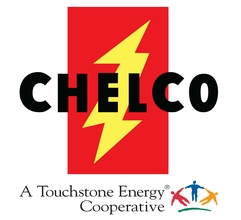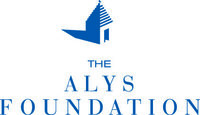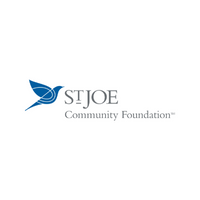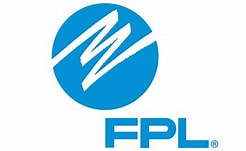Osprey Literary Magazine: Making Every Student Soar

- School:
- South Walton High School
- Subject:
- Literacy
- Teacher:
- Bobbi Pinkston
- Students Impacted:
- 800
- Grade:
- 9-12
- Date:
- October 3, 2018
Investor
Thank you to the following investor for funding this grant.
St. Joe Community Foundation - $625.00
Original Grant Overview
Goal
My school site is great at providing clubs, sports, and organizations to meet the needs of its student body, but we’re missing something. Throughout every curriculum, every course, and every set of standards we find one common thread: writing. To create passionate, lifelong writers, though, we must spark a love of writing in our students. It was in this spirit that our Literary Magazine, The Osprey, was born. It is in writing and the arts that cultures truly converge. This is the closest we get to seeing our real selves. For this reason, we’ve chosen to name our publication Osprey. Majestic. Fierce. Independent. Real. A staff of 15 students began working over the summer, and have worked this first quarter to create a layout, a submission process, and plan for the publication. We’ve begun accepting submissions from every corner of the school- every type of student- but we do not have the funding to print the first issue! With the help of a Walton Education Foundation grant, we would be able to print and promote at least 4 issues of the magazine this year. By showcasing all genres of student writing, supported by student photographs, art, and illustration, we will establish a culture of creativity, especially with regard to the written word, that is currently lacking on campus.
It is our hope that this passion will spread to every classroom, and, in this way, we will see a steady increase in our FSA Writing scores in 9th and 10th grade. Writing, no matter the genre (yes, even on a standardized test) requires a spark. An interest. A passion. If we celebrate writing, we can keep this spark alight. The ELA department works every year to make disciplinary writing tasks available to all teachers. We create rubrics, formative assessment models, source packets, and more to help content-area teachers feel more comfortable including writing in their lessons. This has been impactful, and the buy-in has been incredible. There’s an obvious missing piece, though, that the literary magazine seeks to address: the student. If we support students as writers, not as test-takers, we can shift the culture.
For 9th and 10th graders, specifically, the state has provided data and “next steps” to improve writing on the FSA. One major commonality state-wide is in the score portion regarding Evidence and Elaboration. Students can explain the prompt, and they can summarize the sources. They struggle, though, when they must put their own words to work. This elaboration requirement is a major component on the rubrics for both AP Language and AP Literature, as well as college admission tests such as the SAT. In my own class, I’ve found that the most effective way to teach elaboration is through creative writing tasks. In these tasks, students realize that writing can be fun, that they have their own voices, and that that voice comes naturally to them. By creating a culture of writing, by showcasing students voices, and by publishing it in a beautifully designed, professional magazine- we will increase student engagement with the written word and confidence in their own writing. An increase in scores seems a natural result.
What will be done with my students
The Osprey student staff have worked non-stop to make this idea a reality, with planning beginning before the school year even started. They meet every Wednesday morning for 45 minutes. They are passionate about the publication and all that it can do for the student body and community. We set the goal of printing a magazine per quarter, and have a layout ready to print, but we are lacking the funds to do so. We’ve reached out for quotes, altered our layout, paper weight, and page numbers to get the cost down, but we have to start somewhere. We’ve laid out a plan for targeted videos for the school's morning show for the entire year with our submission calls and deadlines, as well as reminders to keep students interested. From flyers and word-of-mouth alone, we’ve generated over 50 submissions. If we are chosen to receive a Walton Education Foundation grant, we will immediately purchase 200 copies of the first edition of the magazine. We plan to sell the magazine to the student body for $5 per issue, and in doing so, we should generate enough profit to continue printing. We believe that by selling ads, and publishing them in the magazine, we would sully the work of our students. This is why we need a grant to get the publication off the ground.
Any funds leftover after the first printing, (around $300 should remain, see cost estimation in specified section), we plan to hold an end of the year event for parents and students whose work has been showcased in the printed editions of the magazine. This event would include readings, food, festivities- and a general celebration of the year’s hard work.
Benefits to my students
Measuring a cultural shift will be slow; there’s no denying. I would love to say that we will see an increase this year on our FSA Writing scores as a result of shifting our students’ thinking and celebrating the writers among them- but I cannot definitively say that. Through our outreach on the school's morning show (viewed every day by every student on campus), our print publication, and our free online publication, we will be able to reach every student. I know that this portion of the proposal is lacking specifics- I wish I had them. I know from my own classroom instruction that my students scores, this year alone, have increased in both argumentative and informative writing in the 4 point Evidence and Evaluation category as a result of requiring students to take their personal daily writing from our in-class journal, and insert stylistic choices and evidence of personal voice into their formal writing. This is measured in both my formative writing assessments as well as two summative essays students have produced this quarter. In this fashion, it is my belief that generating this same interest in personal, creative writing school-wide will make the light bulb come on for our students, and, thus, our writing test scores will climb. I wish this were easier to measure, and in time, I believe it will be.
Budget Narrative
OSPREY with Cardstock cover and Text Weight pages
Preflight electronic file with crop marks and bleeds- high quality PDF
Single fold to 8.5 X 11
Booklet stitch and trim
Collating by machine
Cover prints in color by machine- 100# Mohawk with color copy cover- 2 sides
Score, one pass
Pages print in color with bleeds, 28#/70# Hammermill color copy 2 sheets copied on 2 sides
Normal turnaround after receipt of usable PDF file: 3 to 4 business days
QTY: 200
Printed by PIP Printing and Marketing Services, a company with which our school already has an account.
Items
| # | Item | Cost |
|---|---|---|
| 1 | 200 copies of full color magazine / Cardstock cover, Text weight pages, full color (see below for full details) | $625.00 |
| Total: | $625.00 |






Share
Please share this page to help in fulfilling this grant.
Email to a Friend